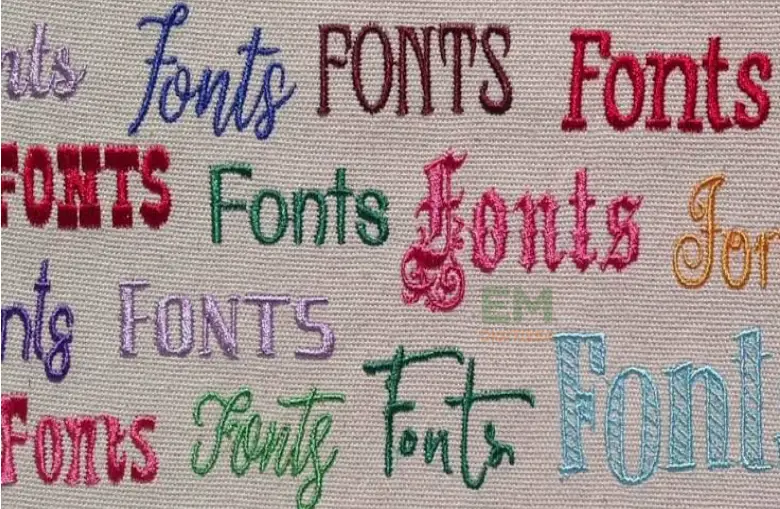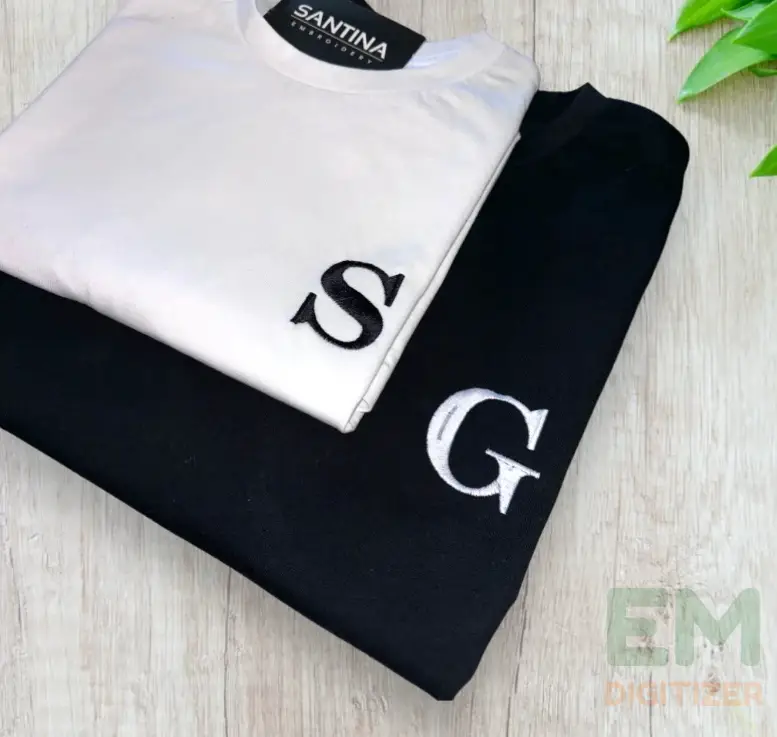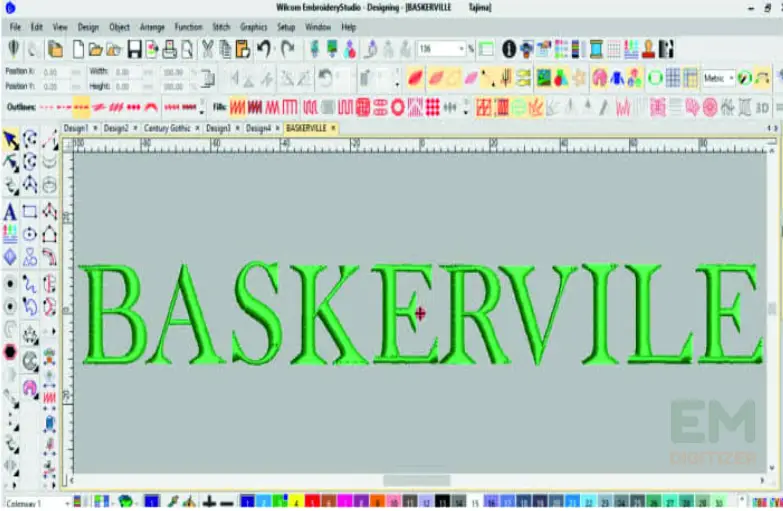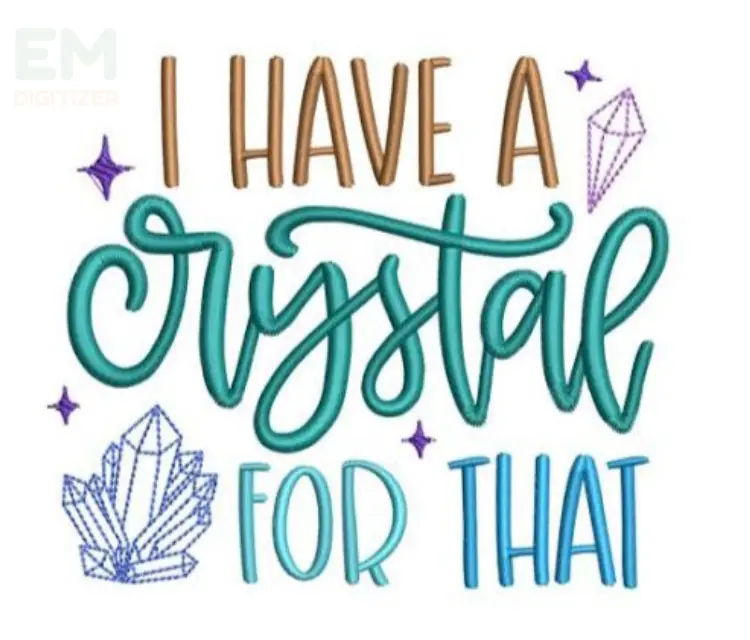Embroidery Fonts

You will learn about the various embroidery fonts, types, and uses in the article. In addition, you will also learn about the different embroidery formats that are used to bring the fonts to life in the real world. First of all, we need to establish what these fonts are.
If you are looking for embroidery digitizing services, EMDigitizer is one of the best embroidery digitizing companies. Providing all types of embroidery digitizing Services. I recommend you try digitizing services.
Order NowGet Free QuoteOverview
Single-letter embroidery designs are known as embroidery fonts, and they are used to express embroidery designs in the real world after interpretation through a specific embroidery format. The fonts are used to create a digital design, and then the design is recreated on the physical fabric. They are developed in a way that makes them suitable for stitching onto fabric, considering various hurdles.

Best Embroidery Fonts
Based on their various functionalities, there are various types of embroidery fonts, each of which is applicable for its specific purpose. Although the ‘best’ embroidery fonts come down to one’s personal preference, some of these fonts stand above the others and are thus more popular and preferred. Some of these are given below:
1. Block Fonts
Block fonts are one of the most commonly used embroidery fonts based on their versatility and simplicity. If you want to learn to digitize text, start with these fonts. They are considered classics and recognized as easily readable. The block fonts usually share certain characteristics, such as having all uppercase letters. We can easily shrink it to a small size to use it for signage, titles, logos, apparel, and various digital and web designs.
2. Serif Fonts
When you see any bigger text or number, usually on sports shirts, this is a serif font. These fonts are a bit bigger and brighter as well as clear to read such as Baskerville, Garamond, etc. These fonts stitch out nicely on just about anything you want.
3. Sans Serif Font
A. Helvetica
Helvetica, also known as Neue Haas Grotesk, is a neo-grotesque font developed by Max Miedinger and Eduard Hoffman. It is one of the most popular sans-serif fonts and is widely used. It is characterized by its modern and simplistic design. The font’s popularity is attributed to its great versatility and neutrality, which makes it a common choice for use in embroidery, most often in a casual sense, and also for accessories. Helvetica is preferred by digitizers because it is easy to read and easy to embroider on a wide variety of fabrics,
B. Arial
Arial is another type of sans-serif font that was developed as a competitor to the widely popular Helvetica font. Arial shares a similar design to that of Helvetica. It boasts simplicity, legibility, and versatility as its primary characteristics. Arial is used primarily in digital media but it is also considered ideal for a wide assortment of embroidery projects such as t-shirts, backpacks, jackets, etc.
4. Gothic
Gothic fonts, also known as blackletter or medieval scripts, are one of the most recognizable and ornate designs of typographic fonts. The Gothic script has a very distinct appearance characterized by its angular letterforms and exaggerated serifs, which gives it a standout medieval look. The Gothic font is usually used in embroidery when an old-fashioned aesthetic or a bold and robust look is desired which makes it suitable for use in large designs such as in banners and flags.
5. Script Font
Script fonts are another commonly used type created in such a way that they mimic the appearance of calligraphy. The main property of a script font is thus, its stylized and cursive nature giving it an elegant appearance. This makes the script font ideal for use in tailored items such as apparel, decor, and accessories.
Understanding Font Format
While embroidery fonts are important in the creation of embroidery designs, they are practically useless without the use of embroidery formats. Embroidery formats refer to a specific file type or format that is used to store digital designs and formats. The embroidery machines then use these formats to interpret the designs into the physical fabric, bringing the design to life. Each format is typically associated with a specific type of embroidery machine or piece of software. There are a variety of embroidery formats, some of which are listed below:
1. BX format
BX Format is a relatively new addition to the world of embroidery and embroidery formats. This type of format is exclusive to a software company called Embrilliance, which introduced it to the market. BX Format was created to solve the problems many users faced in dealing with embroidery machines. It revolutionized and simplified the process of using and organizing embroidery fonts. The BX font, in conjunction with Embrilliance, has made the process of creating embroidery designs highly convenient and efficient by improving the workflow and eliminating the hassle of dealing with multiple file formats.
2. ESA
ESA Font is also commonly used as an embroidery font format, abbreviated as an embroidery-specific alphabet. It is associated with Wilcom and Hatch software for embroidery. One standout characteristic of ESA lies in its great adaptability, making it easy to make changes in the properties of designs according to requirements. ESA is used to store numerous embroidery designs, and, due to its nature, it is primarily used to create highly intricate and embellished designs, keeping all the features in close control.
3. TTF
TTF is another alternative font format that is regularly used by PC and Mac users. It refers to TrueTypeFont. It is not exclusive to embroidery. The TTF format is auto-digitizing, meaning it converts the digital embroidery designs simultaneously into physical form. The main feature exhibited by TTF is its great adaptability, where it can be used to create numerous designs in a wide assortment of sizes, shapes, and patterns while retaining a sense of professionalism and embellishment.
Conclusion
Embroidery fonts offer a great way to personalize crafts and accessories uniquely. There are a lot of fonts available, but we cannot go over each type so we narrowed down the list to 6 basic fonts that are not only versatile but easy to create and tailor to fit the project’s demands. Whenever you choose the font, make sure to keep it in the right format. The most widely used font formats are BX font, ESA, and TTF, which are supported by a wide variety of machines and software.
While the “best” embroidery font comes down to one’s personal preference, we suggest Helvetica as the best, due to its simplistic and minimalist design, as well as the great deal of versatility that it offers.
The ESA format is the most commonly used format for fonts, due to its adaptability and detailed nature.
The typeface is referred to as “letter style” such as Arial, or Calibri, and it doesn’t matter what size you set. Whereas font is a physical display of letters which include weight, size, and typeface. For example, Helvetica is a typeface that is made up of 51 fonts and each font has specific. weight, size, style, and effect.
If you have any questions leave the comments or you can visit our social channels for more updates regularly. We provide embroidery digitizing services if you need digitizing services feel free to contact us or email us.




